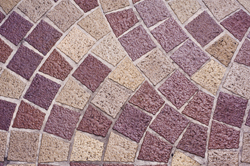You'll never look at pottery in the same way again
The 'Interfacial materials - computational and experimental multi-scale studies' (Incems) project set out to investigate the properties of multifunctional ceramics with nanometre-scaled intergranular films (IGFs). The latter are found at grain boundaries in polycrystalline materials. The approach was to examine and tailor the material properties that influence behaviour brought about by exposure to other environments, electric fields and mechanical stress. Employing computational modelling, the EU-funded consortium analysed the stability, structure and composition of IGFs and tried to identify under what conditions transient IGFs are formed. They also aimed to offer strategies so these can be modified or eliminated with heat treatment. This is important so as to optimise electrical and mechanical resistance for the good performance and durability of devices. Using the polycrystalline material SrTiO3 (STO), researchers were able to effectively study ceramic interfaces, and achieved strong and critical experimental validation. Sets of polycrystalline SrTiO3 materials with varying microstructures and compositions were synthesised under controlled conditions and their interfaces were characterised using various high-resolution imaging methods. An important result of Incems' theory-based activities was success in setting up and making operational the necessary theoretical and computational approaches for work to progress. The most important and unexpected study outcome was discovering no evidence of IGFs forming in the STO materials. Activities then focused on varying the synthesis approach so as to determine processing conditions for the formation and suppression of IGFs. Experiments in this direction sought to supplement interfaces with the use of bicrystals, thus extending the possibilities of determining IGF formation conditions. Atomistic simulation experiments using bicrystals resulted in enhanced understanding of the strengths and weaknesses of empirical interatomic potentials applied to STO interfaces. Project progress and findings were shared through presentations at international scientific conferences and publications in refereed international journals. The synergistic work and predictive computational models developed by Incems partners succeeded in realising the final goal: predictive multiscale modelling of interface-controlled functional ceramic materials. The work carried out offers a base for future work aiming to optimise existing and develop new ceramic-based devices and applications.







